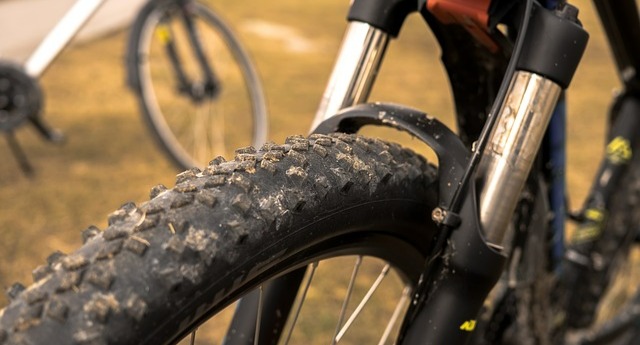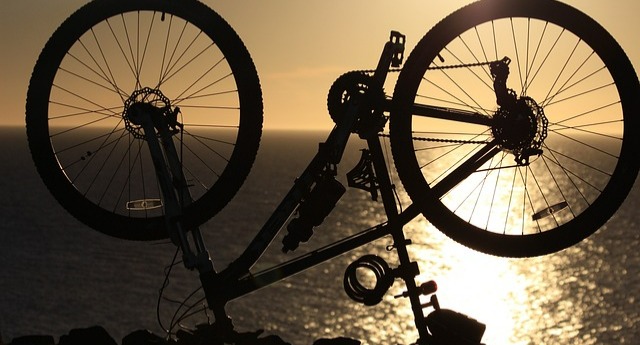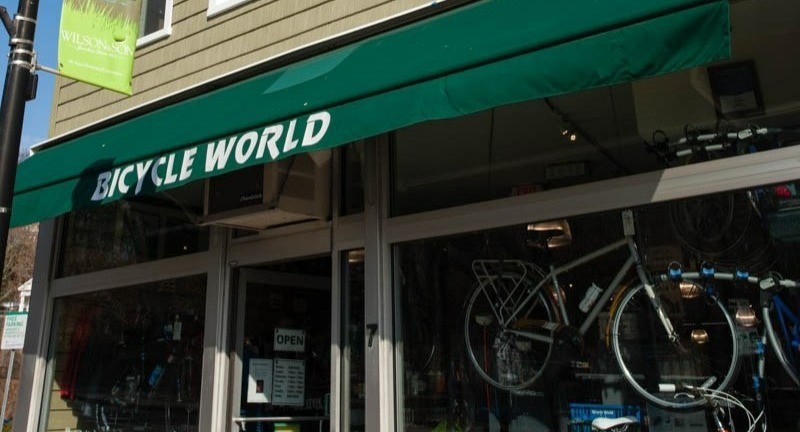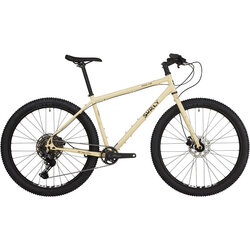
Mountain Bikes for Beginners
A mountain bike is a great starting point if you want to connect with the outdoors. They’re great for trails, casual jaunts around old railway trails, and tackling mountains. But if you aren’t familiar with them, here’s all you need to know about mountain bikes for beginners.

Mountain Bike Riding Styles
Let’s start with the fact that there are different styles of mountain biking. And many manufacturers categorize their bikes based on those styles. Here’s a look at some of the most popular:
Cross-Country Biking: Cross-country is a great way to start mountain biking. It requires less skill and fitness levels. You can check out the scenery and go at your own pace. It’s equivalent to hiking on wheels.
Mountain Biking: This style is likely what you’ve always imagined. Rough, rocky, dirt paths. Steep hills with equally steep descents. Sharp turns that test your mettle. And probably some falls along the way. But, of course, you’ll need a bike that can take that. So, look for something with a good suspension and a heavier frame.
Downhill: Downhill riding usually involves lift-service bike parks using ski resorts during the off-season. Downhill mountain bikes are heavier than cross-country bikes. They also have firm suspensions to tackle rugged terrain. Their gearing is typically low because they aren’t designed to pedal uphill.
Fat-Tire: Fat-tire mountain bikes have tires starting at 3.7 inches wide or greater. As you might suspect, they provide exceptional traction through mud, snow, and sand. They’re also a plus on rugged terrain because they offer some cushioning.

Types of Mountain Bikes
Depending on your style, there’s a mountain bike to match it. So, you can select from all kinds:
- Trail Bikes
- Hardtail Bikes
- Dual Suspension Bikes
- Cross Country and X-Country Bikes
- Enduro Mountain Bikes
- Downhill Mountain Bikes
- Fat Bikes
- Electric Mountain Bikes
- Dirt Bikes
No question that it can be daunting for beginners. So, you should also find a mountain bike shop near you with knowledgeable staff. They can help you with the selection process.
Once you’ve determined your riding and bike style, you want to consider the bike’s suspension. It significantly affects how enjoyable (or not) your ride will be.
We're Here to Help

Mountain Bike Suspensions
Mountain bikes have three types of suspensions. That and the bike’s wheel diameter determine the riding style and terrain your bike can tackle.
- Rigid Suspension: Many fat-tire mountain bikes feature rigid suspensions. They have none. Riders count on the fat tires to absorb the shocks when riding. You probably will notice a difference if riding on trails with softer terrains or roads. A rigid suspension costs less and is easier to maintain. But they won’t deliver the comfort of a mountain bike with a suspension.
- Hardtail Suspension: A suspension fork sits at the front of the bike to absorb impacts to the front wheel. However, there is no rear suspension. Cross-country riders like these suspension types because they allow a more direct power transfer to the rear tire. So, they emphasize speed and efficiency versus comfort. As a result, it makes climbing hills easier.
- Full Suspension: The mountain bikes have front and rear suspensions just like a car. The downside is that the bike packs more weight. But because two is generally considered better than one, they absorb shocks when riding to make things more comfortable for riders. They also improve the bike’s traction. In addition, many mountain bikes with full suspensions include a lock-out feature on the rear suspension to enhance power transfer when climbing hills.
So which suspension is best for beginners?
Generally, a hardtail mountain bike excels at climbing. In addition, they’re easier to maintain than full-suspension bikes while costing less. As a result, many bike shops recommend them for beginners.
Full-suspension mountain bikes kick things up a notch. So, they’re an excellent choice if you want to tackle more technical trails with more rugged terrains.
As mentioned, suspensions and wheels go hand-in-hand. So, let’s look at wheels next.
Familiarize Yourself with Suspension and Travel
Apart from the suspension type, you’ll also need to consider its travel, usually measured in millimeters. The more travel, the smoother your ride on rough terrain. So downhill bikes travel more than climbing bikes to absorb greater shock on uneven terrain.
For example, a mountain bike with 150mm travel can smoothly handle a 15cm high obstacle.

Mountain Bike Wheel Sizes
Traditionally, most mountain bikes were equipped with 26-inch wheels. However, it’s dated and more likely to be found on a used mountain bike. So today’s standard is 27.5-inch or 29-inch wheel sizes.
Smaller Wheels | Larger Wheels |
Faster acceleration | Slower acceleration |
| Less Traction | More Traction |
Rougher ride | Smoother ride |
Lighter | Heavier |
More maneuverable | Less maneuverable |
Better for shorter riders | Better for taller riders |
The upside to a 27.5-inch wheel size, also known as 650b, is that they roll over terrain easily. In addition, they provide improved maneuverability and responsiveness versus a 29-inch wheel.
Mountain bikes with 29-inch wheels are generally heavier, making them less nimble (think turning) than mountain bikes with 27.5-inch wheels. In addition, 29ers take longer to accelerate and make more effort to slow down.
However, they deliver excellent grip and roll over obstacles more readily. They also climb exceptionally well.
Mullet bikes also use both wheels, a 29er in the front and a 650b in the rear. The larger wheel in front improves speed and the ability to roll over obstacles, while the smaller wheel in the back allows for sharper handling.
Both 27.5 and 29-inch wheels support hardtail and full suspensions.

Mountain Bike Frames
With mountain bikes, you can generally select from four frames. Ideally, you want the lightest bike possible for pedaling uphill. But, conversely, you want a stockier bike for handling obstacles.
- Aluminum: The most common frame, it balances strength, weight, and cost.
- Steel: Steel allows for thinner-walled and smaller-diameter tubes. So you get an appropriate amount of flex, especially with hardtail mountain bikes. It’s also widely available.
- Titanium: The mountain bikes are lightweight but still durable. They also cost a great deal.
- Carbon: Like titanium, carbon allows manufacturers to create a lightweight bike with a strong chassis. But again, it does so at a higher price.
So, if you’re starting with your mountain biking adventure, there’s plenty of upside to a good, old aluminum bike. But, again, a reputable mountain bike store can help guide the selection process.
Mountain Bikes for Sale

Budgeting for a Bike
You can always take the used route to minimize your investment. Just be wary. Mountain bikes can have much wear and tear depending on the rider. And that can translate to more maintenance costs.
New mountain bikes have a wide price range.
A bare-bones hardtail bike generally costs $500 to $1,000. But just like a used bike, an entry-level mountain bike can cost you down the road with maintenance.
For $1,000 to $2,000, you can get a new hardtail mountain bike and some full-suspension options, though you should expect to pay a minimum of $1,500 for a full-suspension model.
At $2,000 to $3,000, some hardtails offer carbon fiber frames. However, full-suspension mountain bikes will be aluminum.
The following cost level places into the serious mountain biker mode -- $3,000 to $5,000. This range typically includes full-suspension models. Plus, you move into specialized mountain bikes like cross-country, downhill, and all-mountain.
For the highest-performance mountain bikes, you can pay $5,000 and up. They typically include carbon frames with high-end specs.
Our bike shop in Mt. Kisco, NY, has mountain bikes for sale at all price levels to fit any budget.
Make Sure You Have the Right Bike Gear
More than many other biking styles, mountain biking requires appropriate gear. After all, if you tackle mountains with rocks, uneven slopes, narrow trails, and different terrains, your risk of falling increases.
Your safety starts with the right bike helmet. Mountain bike helmets come in two styles – full-face and open-face. Although the former is hotter and heavier than the latter, it affords the best overall protection.
Other protective bike gear includes knee and elbow guards, gloves, and goggles. You should also consider a neck brace and body armor to tackle jumps.

Talk to the Experts at Our Westchester County Bike Shop
With mountain bikes, it’s best to sweat the details to ensure you get the right bike. That’s why it’s best to talk with our staff before deciding.
Our mountain bike store features top brands like Trek, Scott, Surly, and Salsa. But, more importantly, we can work with you to determine which style matches your needs and what specifications will be required. Of course, we can also outfit you with all the appropriate bike gear.
Equally important, we’ll help you get the best ride possible with a bike fitting. It ensures a comfortable while also reducing your risk of injury.
Mountain bikes, more than many other bike styles, take a beating. So, they typically require more repair and servicing. Our bike repair shop is one of the best in New York, recognized by Expertise and Bicycling Magazine.
If you’re ready to capture all the enjoyment of mountain biking, we’re here to help. Stop by our Mt. Kisco bike store anytime.





